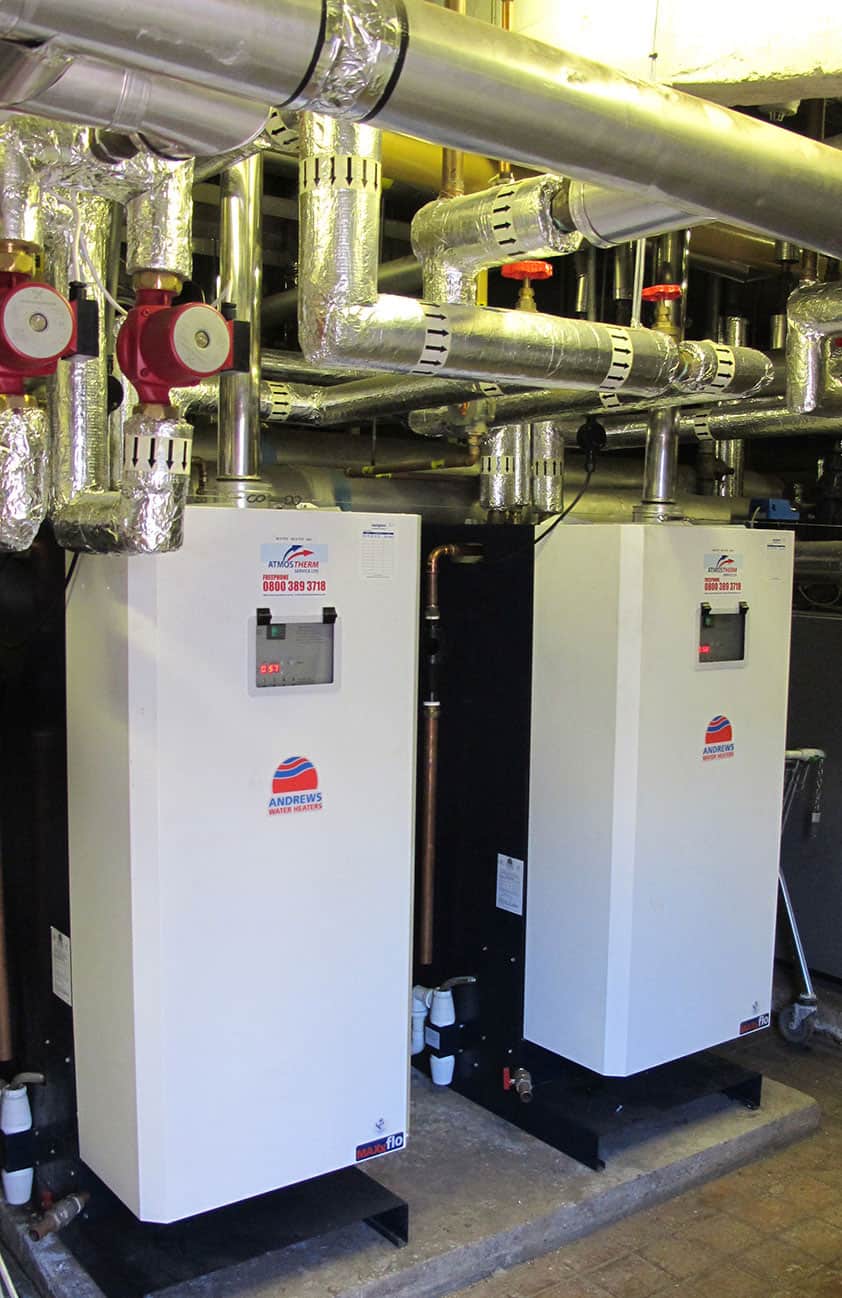
Your boiler room needs ventilation to ensure it is safe, runs smoothly, and complies with UK legislation.
Find out how to know if your boiler has enough ventilation, your boilers ventilation requirements, and how you can ensure your boiler gets enough air.
What boilers need ventilation?
In commercial premises, boilers need ventilation as they have an open flue unlike domestic properties which have a balanced flu.
An open flue usually includes a pipe that leads waste gases away and allows fresh air to enter the appliance whereas a balanced flue or conventional flue allows air to enter from outside to give your boiler oxygen. A balanced flue will have two tubes, one to let oxygen in, and one to let waste gas out. An open flue only has one for waste gas.
Older boilers and non-condensing boilers with exhaust-only flues need air from outside to give it enough oxygen to burn the fuel.
If your boiler, whether gas or oil, is not room sealed then it gets rid of waste gasses but can’t intake oxygen, so it needs ventilation.
But, even if your boiler doesn’t need ventilation, meaning it needs to take oxygen to burn fuel, it still might need circulation. Circulation is ensuring there is room around it. Boilers get hot and you shouldn’t have items set it up against it or it could be a fire hazard.
Why a boiler room needs ventilation
Ventilation brings fresh air inside from the outside and removes bacteria and pollutants while ensuring there is an adequate supply of oxygen.
A boiler needs ventilation if it is taking oxygen from the room to burn fuel. If it can’t get the right amount of oxygen, then it won’t be able to work efficiently.
Plus, the waste gases need somewhere to go which is why they need to be placed on an outside wall.
Boilers can also pose a risk for emitting carbon monoxide which can be fatal. Carbon monoxide is an odourless gas, so you will not be able to detect it in the air yourself. That’s why it is so dangerous because you may be exposed to it without realising.
If staff need to go into your boiler room, it could pose a risk if there is not enough oxygen in the room for them to breathe properly. If the door slams going into the room, then you have a problem.
Boiler room ventilation requirements
Ventilation in general is a legal requirement under the Workplace Regulations Act 1992. Not only do employers have to ensure their workplace has adequate ventilation but they are responsible for ensuring ventilation systems are inspected on a regular basis and are operational.
Employers must comply with the Health and Safety Guidance and the British Occupational Hygiene Society in regard to ensuring their workplace is safe.
Your boiler room should have at least one permanent opening but two is recommended.
There is a UK standard the BS 6644, which sets out the ventilation your boiler needs. It states the size of the ventilation openings depending on the temperature. For example, if your gas boiler is at a high level (100mm below ceiling level), then it needs to be forty degrees Celsius whereas a mid-level boiler (1500mm below floor level) should be thirty-two degrees Celsius, and a low level (100mm above floor level) should be twenty five degrees Celsius.
The standard also sets out the natural ventilation requirements direct to outside air for open flued appliances in a boiler room. It sets out requirements for different grille location and for the level your boiler operates.
How do you calculate fresh air intake for a boiler room?
You can get a qualified heating engineer to ensure your boiler room has enough fresh air, but you can calculate this yourself.
A general rule to follow is ensuring there are four to six square inches of unrestricted airflow for every boiler horsepower.
A calculation you can do is:
Total air required divided by allowable velocity at opening equals the net free open area of opening.
How do you ventilate a boiler room?
- When your boiler is installed, there should be at least one permanent opening. You should ensure any openings are never blocked and regularly clean these to ensure they are not clogged by dust and debris.
- Your boiler should have space above and below to allow air to flow and there shouldn’t be any items set against it, especially not flammable ones.
- Install a gas detection device such as a carbon monoxide alarm to ensure this poisonous gas does not escape into your workplace. You can also install a CO2 monitor which will tell you if there is poor ventilation. A reading of around 1500ppm means there is poor ventilation, while above 1500pm means ventilation needs to be improved.
- Keep your boiler room cool by using a fan to pull warm air outside. If you are in a location where temperatures can get high on a regular basis, it could reduce the lifespan of your boiler if you allow your boiler to get hot regularly.
- Get your boiler serviced at least once a year. A heating specialist can tell you if you have any ventilation issues before it poses a safety risk and causes you added expense.
Having your boiler regularly serviced also ensures it is running efficiently to reduce your energy bill. Servicing helps to keep your boiler at its best so you don’t have any unexpected breakdowns and helps it to run for longer and give you better value for money.
Who can check your boiler’s ventilation?
A qualified heating engineer can check your boiler to ensure it is safe. If your boiler is gas, then choose a Gas Safe registered engineer.
At Atmostherm, we have over 40 years of experience in the HVAC industry. We can advise you on the ventilation needed for your boiler to ensure there aren’t any safety issues.
Contact us today to discuss any commercial boiler queries.
